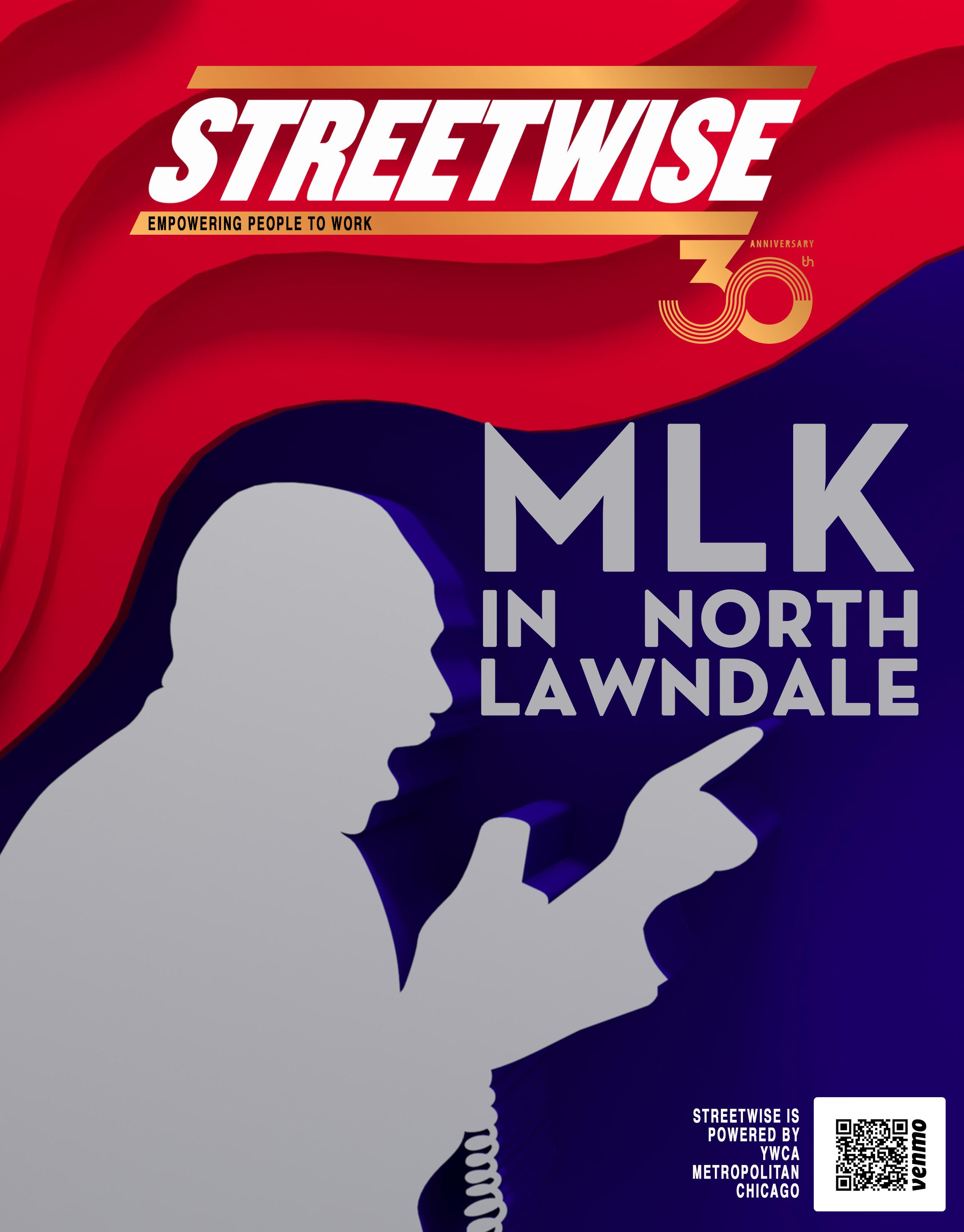
January 9 - 15, 2023 Vol. 31 No. 02 $1.85 + Tips go to your Vendor $3





ELEVATE YOUR Celebration www.stewartscheesecakes.com T r a d i t i o n a l , g l u t e n f r e e , a n d g l u t e n f r e e v e g a n c h e e s e c a k e s a n d c a t e r i n g Use coupon code YSHOP for a 5% discount and we'll donate 10% to YWCA Metropolitan Chicago with ADVERTISEMENT ADVERTISEMENT
SportsWise
Chatting about the upcoming year in sports. Cover
Story: MLK IN NORTH LAWNDALE
Dr. Martin Luther King Jr. brought his civil rights campaign to Chicago in 1966 to gain an urban, Northern perspective to the work he had done earlier in the South. In order to get closer to the people, he lived in a rundown apartment at 1550 S. Hamlin Ave., (since demolished) and established his West Side Action Center nearby at Stone Temple Baptist Church.
In honor of Dr. King's January 15 birthday (celebrated Monday, January 16), StreetWise visits his North Lawndale neighborhood with three people. Historian Blanche SuggsKillingsworth describes growing up in the 1960s and landmarks worth preserving. Del-Kar Pharmacy Edwin Muldrow, whose father sold Dr. King his morning newspaper every day, describes the importance of 16th Street.
Richard Townsell, executive director of Lawndale Christian Development Corporation and co-chair of the North Lawndale Community Coordinating Council housing committee, describes both challenges and recent advances.
The Playground
THIS PAGE: StreetWise Vendor A. Allen visits the Dr. King Legacy Apartments, 1550 S. Hamlin Ave., a $17 million delelopment by Lawndale Christian Development Corporation with 45 units of affordable housing (Suzanne Hanney photo).
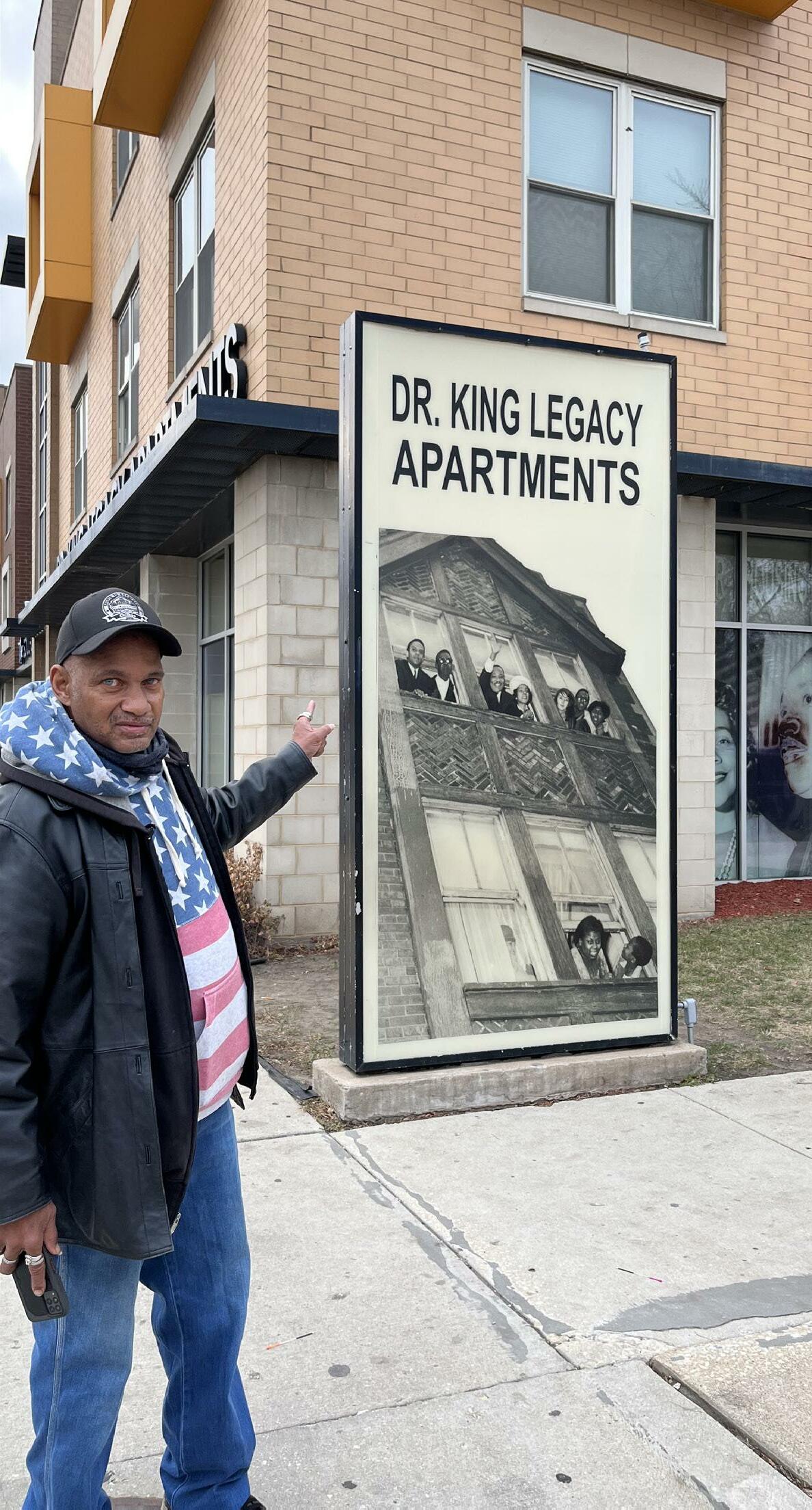
DISCLAIMER: The views, opinions, positions or strategies expressed by the authors and those providing comments are theirs alone, and do not necessarily reflect the views, opinions, or positions of StreetWise.




DONATE To make a donation to StreetWise, visit our website at www.streetwise.org/donate/ or cut out this form and mail it with your donation to StreetWise, Inc., 2009 S. State St., Chicago, IL 60616. We appreciate your support! My donation is for the amount of $________________________________Billing Information: Check #_________________Credit Card Type:______________________Name:_______ We accept: Visa, Mastercard, Discover or American Express Address:_____ Account#:_____________________________________________________City:___________________________________State:_________________Zip:_______________________ Expiration Date:________________________________________________Phone #:_________________________________Email: StreetWiseChicago @StreetWise_CHI LEARN MORE AT streetwise.org Dave Hamilton, Creative Director/Publisher dhamilton@streetwise.org Suzanne Hanney, Editor-In-Chief suzannestreetwise@yahoo.com Amanda Jones, Director of programs ajones@streetwise.org Julie Youngquist, Executive director jyoungquist@streetwise.org Ph: 773-334-6600 Office: 2009 S. State St., Chicago, IL, 60616 4 6 8 15 Arts & Entertainment Event
week!
highlights of the
ARTS & ENTERTAINMENT RECOMMENDATIONS
 Compiled by Sarah Linde & Suzanne Hanney
Compiled by Sarah Linde & Suzanne Hanney
Birthplace of Black History Month!
Guided Tour of the Historic Former Wabash YMCA

The Wabash Y was the heart of cultural and economic progress for African Americans in Bronzeville for over half a century and is hailed as the birthplace of Black History Month. The Renaissance Collaborative (TRC) staff lead tours of the building, augmented with newly compiled vintage photos and archived newspaper articles. Although TRC’s mission is promoting self-sufficiency, the organization was founded in 1992 to restore and preserve the historic former Wabash Y. Patricia Abrams, founder and executive director of TRC, stated: “We believe that learning about the achievements of prominent Black figures in our communities will not only reduce racism, but more importantly for African Americans, it will strengthen our cultural identity and inspire us to set our ambitions high, even if it means restarting or a reset of our life’s goals and aspirations.” Visitors must RSVP by 4 p.m. on Eventbrite the day prior to the in-person tour. The tours are on the second and fourth Saturdays of each month at 10:30 a.m. at 3763 S. Wabash Ave. The tours are free, but a donation of $20 to TRC is suggested.
Face the Past!
‘The Ripple, The Wave That Carried Me Home’ A family responds to injustice, and a daughter reckons with her political inheritance in this new play by Christina Anderson. Janice’s parents are prominent activists fighting for the integration of public swimming pools in 1960s Kansas. As injustice penetrates the warm bubble of her childhood, Janice grows apart from her family and starts a new life far away. She receives a call asking her to speak at a ceremony honoring her father, and she must decide whether she’s ready to reckon with her political inheritance—and a past she has tried to forget. A co-production with the Berkeley Repertory Theatre, "The Ripple" is at the Goodman Theatre, 170 N. Dearborn St., from January 13-February 12. Tickets $15+ at goodmantheatre.org/ripple
Life Is A Cabaret!
‘Cabaret’
Porchlight Music Theatre presents the Tony Award-winning landmark musical “Cabaret,” at the Ruth Page Center for the Arts (1016 N. Dearborn St.) January 14 – February 12. Bold and provocative, this winner of seven Tony Awards, including Best Musical, it shines a spotlight on Berlin in the late 1920s and the colorful, gritty and hedonistic lives found there. Filled with iconic songs and electrifying dance, "Cabaret" tells the story of the American writer Clifford Bradshaw and his relationship with English cabaret performer Sally Bowles on the eve of the Nazi party’s rise to power. Overseen by an ominous Emcee at the fabled Kit Kat Club, "Cabaret" is a cautionary tale that has renewed resonance in today’s political climate. Previews are Saturday, Jan. 14 at 3:30 p.m., Sunday, Jan. 15 at 2 and 6 p.m., Wednesday, Jan. 18 at 7:30 p.m., Thursday, Jan. 19 at 1:30 p.m. Performance schedule is Thursdays at 7:30 p.m., Fridays at 8 p.m., Saturdays at 3:30 and 8 p.m. and Sundays at 2 p.m. with a weekday matinee Thursday, Feb. 2 at 1:30 p.m. Tickets start at $25 at 773.777.9884 or PorchlightMusicTheatre.org


Expect the Unexpected!
Anne Hughes ‘Phenomena’
Anne Hughes sees each creative journey as an adventure in which she faces the unexpected. With every new work, she finds herself gravitating toward themes relating to nature, the cosmos, science and the vastness of what we know and what we do not know. Color, form, and space evolve with abstracted, layered imagery, stimulating a variety of emotional and intellectual responses. In “Phenomena,” ecosystems of all sorts abound. For every action there is a reaction – it might not be equal, but there is a consequence. With this exhibition at the Epiphany Center for the Arts (201 S. Ashland Ave.), Hughes wanders through the mysteries of life and the magic of the creative experience. This exhibit runs through January 21. For more information or to schedule a visit, email art@epiphanychi.com

ARTS & ENTERTAINMENT
4
Set to Music!
'Harry Potter and the Sorcerer's Stone' Live
More than 20 years ago, “Harry Potter and the Sorcerer’s Stone”™ brought an orphaned boy to a boarding school for would-be wizards. Now, the film returns to the giant screen in high-definition, while John Williams’ unforgettable score is performed by the Chicago Symphony Orchestra, conducted by Justin Freer. Experience the magic with the first installment of the Harry Potter™ Film Concert Series, 7:30 p.m. Thursday-Saturday, January 12-14 at Symphony Center, 220 S. Michigan Ave. Tickets to the 190-minute show are $75-$399 at cso.org

Let Me See You 1,2 Step!
Step Afrika

As the first professional dance company dedicated to the tradition of stepping, Step Afrika! blends dance styles from historically African-American fraternities and sororities, traditional African dances, and an array of contemporary dance and art forms into a cohesive, compelling artistic experience. Step Afrika performs at Auditorium Theatre (50 E. Ida B. Wells Drive) on January 14. Ticket are $30+ at auditoriumtheatre.org

An Unforgettable Surprise!
‘The Birthday Party’
"The Birthday Party" is known as Harold Pinter’s “comedy of menace.” Stanley may or may not play the piano, and today may or may not be his birthday, and he may or may not be hiding from someone in Meg’s boarding house, where he’s lived for a year. But he’s definitely made nervous by news that two new boarders are about to arrive, and she’s definitely throwing him a party. The show runs January 13-February 26 at City Lit Theater Company, 1020 W. Bryn Mawr Ave. Tickets are $34 general admission, $29 seniors, $12 students and military, (plus applicable fees) at citylit.org

Classical Lunch Break!

Dame Myra Hess Memorial Concerts | Claire Huangci, Piano Classical Music Chicago (formerly the International Music Foundation) presents the Dame Myra Hess Memorial Concerts. The free weekly concert series features extraordinary music by artists who are early in their careers. Enjoy classical concerts in-person at the Seventeenth Church of Christ, Scientist, Chicago, located at 55 E. Wacker Drive. Face masks are optional. You may also view from the comfort of your own home. Join the event in person or online at 12:15 p.m. January 11 for pianist Claire Huangci in music by Franz Schubert, Frédéric Chopin and George Gershwin. Concerts can be viewed from CMC’s website: classicalmusicchicago.org and 98.7 WFMT.

‘Tick…Tick, BOOM!’


A New Day!
Before “RENT,” there was “Tick, Tick…BOOM!” Written by the late Jonathan Larson and directed by BoHo Artistic Associate Bo Frazier, “Tick, Tick…BOOM!” tells the autobiographical story of Jonathan, a struggling New York composer entering his 30s. The year is 1990, the AIDS crisis is escalating, and Jonathan is growing increasingly desperate to leave his dead-end job and write the next great American musical. Jonathan’s girlfriend Susan and his best friend Michael announce major life changes, and Jonathan begins to wonder if the ticking clock is running out on his Broadway dreams. In BoHo Theatre’s groundbreaking production, Director Bo Frazier reimagines this gripping rock musical as a celebration of trans joy, love, and creativity. The play runs January 12-February 5 at The Edge Theater, 5451 N. Broadway. Tickets are $35 for general admission, $20 for seniors, military, and first responders, and $12 for transgender and gender non-conforming audience members, students, and educational professionals at bohotheatre.com
www.streetwise.org 5
Patrick: All right, team. So, with a lot of sports in a lull, so to speak—don’t know what’s going to go down—let’s talk about something that’s strongly on your mind for the upcoming year in regard to the sports landscape. So, not looking for any predictions or anything— unless you’re saying: Bulls win! Bulls win!—just a general sense of things. Who wants to kick it off?

Donald: I believe all teams— especially the Chicago Bears— need domes for their stadiums. There is simply no reason for any team to have to play a full game in minus-degree temperature. Absolutely no reason.

John: Right, because it obviously isn’t the cost that would be the reason.
Donald: Exactly. So, to me, it either shows non-empathy for those who have to play in this weather, for the fans, or, simply, someone who has no sense.
Russ: I never understood it. I mean, I realized some teams look to lean on that advantage. Of course, it’s a cold, sometimes very wet, advantage, but if a person can get used to poor weather, then it could be a use-

ful weapon against incoming teams.
Patrick: I agree, Russ. I feel also that every team should have a dome. A retractable dome at the very least. This way, teams can still enjoy a warm and sunny day naturally. All right, what do you have, John?
John: Well, I’m torn between a few issues. However, the one that moves me the most is the one dealing with Monday Night Football. I want better games. The NFL needs to do a better job of scheduling good Monday Night Football matches. Mind you, the games are scheduled prior to the season, so anything could alter the level of the competitiveness of the two teams, including, simply, the records of the team.
Donald: What about some sort of system that, as the season progresses, the Monday night games are scheduled?
Russ: How would they do it, though? I mean, how would the ticket sales go? Would every team have a Thursday or Sunday night game scheduled, then as we move through the season, the league would move two of the teams over to Monday?
Patrick: That’s the only way it could be done, right? Not being pre-season set, though, could be tough. All right, let’s move on from this one. Russ, I’ve been watching you a lil’bit as we’ve gone on with these topics—what do you have?
Russ: You’ll love this one. Well, you’ll hate the contents, but love the conversation, I’m sure! All right, so, when did basketball players get to just take off games seemingly whenever they want? For example, just recently when the Dallas Mavericks visited our Chicago Bulls, perennial AllStar and MVP talent Luka Doncic didn’t play. Presum-
ably resting, even though it was called a “strained right quadriceps.” The fans, of course, were pissed. Can any of y’all imagine attending a Bulls game against the New Orleans Pelicans with an overwhelming hope to see star Zion Williamson live— and, day of, y’all are told he’s not playing? $100 - $200 down on tickets…and the reason for you paying that amount is not on the court?
John: Yeah, I would be upset.
Donald: Never happened in the Jordan Era.
Russ: Agreed. The owners need to put a stop to it. The players are paid to play. The coaches are paid to coach. The owners get paid “owning.” I mean, c’mon, NBA. This is serious.
Patrick: It is. Good stuff, fellas. Any comments or suggestions? Email pedwards@streetwise.org
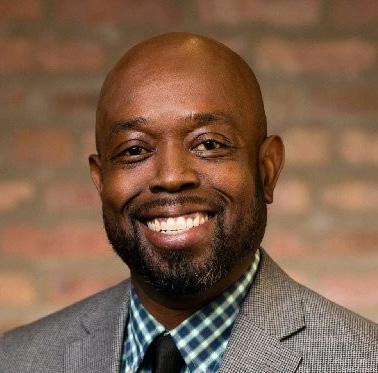
SPORTS WISE
Rashanah Baldwin
Vendors Russell Adams, John Hagan and Donald Morris chat about the world of sports with Executive Assistant Patrick Edwards.


HISTORIAN BLANCHE SUGGS-KILLINGSWORTH MARTIN LUTHER KING JR.'S NORTH
 by Suzanne Hanney
by Suzanne Hanney
Traveling up from the South alone at 10 years old in 1962 was the hard part for North Lawndale historian Blanche SuggsKillingsworth.
Her grandmother put her on an Illinois Central (IC) train headed north from Mississippi with her mother’s Chicago address pinned on a tag inside her coat. The train was so segregated that Killingsworth couldn’t move up to the front until it reached Kentucky.
When the train pulled into 63rd Street, Killingsworth figured she was in Chicago, so she got off. But her mother wasn’t there. She was instead waiting at the IC’s 12th Street terminus.
“A policeman approached me and I thought I was in trouble. In the South, when they approached you, it was because you did something wrong,” said Killingsworth, 70, the president and co-founder of the North Lawndale Historical and Cultural Society, in a Zoom interview along with Peter T. Alter, chief historian and director of the Studs Terkel Center for Oral History at the Chicago History Museum.
Killingsworth showed him the tag inside her coat. He told her she had gotten off at the wrong stop and took her to the 63rd Street police station until her mother could pick her up there. Together, they went home to 3134 W. 15th St., a greystone two-flat owned by an African American. In the years leading up to Dr. Martin Luther King Jr.’s stay there in 1966, the West Side became home to many African Americans in the second wave of the Great Migration. Killingsworth lived at that address until she was 18 and left home; her mother stayed there until she died in 1983.
Killingsworth’s parents had separated when she was small. Her mother came up to Chicago first with her baby daughter and stayed on 63rd Street with her sister, Killingsworth’s aunt. Her mother worked as a maid in Skokie and had to be on the job at 6 a.m. “We got ourselves together to go to school. She laid our clothes out. She had cooked us breakfast. When we came home, we knew what we were supposed to do.” Killingsworth’s older sister came North next and then it was her turn.
“I had to come up here as I was about to get killed in Hazlehurst for racism. I was not about to say ‘Yes, ma’am and no ma’am' to anybody." Her Mississippi town was about 60
miles from where 14-year-old Emmett Till had been lynched in 1955. Her baby brother remained in the South, near his father.
Was she better off in Chicago?
“Yes, because in the South it was very racist. There was racism in Chicago, but it had a cover over it. When I was in the South you had a place. Whites lived on the North Side, Blacks on the South Side. You knew you didn’t go to the same school; we had one school, they had two. We didn’t have a swimming pool. You didn’t drink from the same fountain, go to the same restaurants. You didn’t go to the show and sit downstairs. When I went to the Central Park Theater and was able to sit downstairs, that was a big thing for me.”
As a founder and now head of the North Lawndale Historical and Cultural Society (NLHCS), Killingsworth describes in a Facebook video how she carries pictures of the theater on her cellphone and shows them to people around the U.S. “Look at what’s in North Lawndale.”
Opened in 1917, the Central Park Theater at 3531 W. Roosevelt Road was designed by the architectural firm of Rapp & Rapp for the Balaban & Katz cinema chain. It was their first collaboration, which was followed by the Uptown, Riviera, Chicago and Oriental (now Nederlander) movie palaces. During one of its Jazz Nights in 1921, the famed bandleader and composer of seven decades Benny Goodman (1909-86) made his professional debut there playing the clarinet – when he was just 12 years old. The Goodman family had settled at 1125 S. Francisco Ave. when Benny was 8, and had taken music lessons at Hull House and Kehelah Jacob Synagogue.
The theater retains its chandeliers, tiles and other fixtures from its 1920s-1940s heyday, according to the Rev. Robert Marshall, who since 2016 has been pastor of the House of Prayer, Church of God in Christ. In 1971, the House of Prayer purchased the 1,800-seat theater, which is listed on the National Register of Historic Places. It became known as the gospel headquarters of Chicago as it hosted singers like Shirley Caesar and the Mighty Clouds of Joy, and others.
“As I told the previous alderman, if it’s the last thing I do, this theater will not go away,” Killingsworth said in a video.
Alt-J
LAWNDALE 8 COVER STORY
Suggs-Killingsworth
SUGGS-KILLINGSWORTH GIVES US A TOUR OF LAWNDALE
Last November, Block Club reported that the NLHCS and the House of Prayer church had joined with the Jewish Community Relations Council of Chicago, Preservation Chicago, the School of the Art Institute of Chicago’s Office of Engagement, and Future Firm to form the Central Park Theater Restoration Committee.


Another favorite hangout for Killingsworth was St. Agatha’s Church, 3147 W. Douglass Blvd. Killingsworth and her mom lived behind the church, which fronted on Douglass Park. John Barlow and Dan Mallette, both of whom marched with Dr. King from Selma to Birmingham, AL, in March 1965, were the priests there; in 1972, Barlow protested in front of Cardinal John Cody’s house when the archdiocese closed an education program at St. Agatha for high school dropouts. Former Chicago Board of Education President Michael Scott lived down the street. “We kind of grew up together.
“What I loved about St. Agatha’s was that I had my first job there in the NYC: Neighborhood Youth Corps, sort of like After School Matters. I worked there as a young lady. I used to love to dance, so I had an [African] dance class there.
“Sears used to donate their floor samples to St. Agatha’s and St. Agatha’s would turn around and sell them at a real low price to get funds to run their programs.”
Killingsworth was in 4th grade when she moved to North Lawndale. She attended Holland School on 16th Street while James Weldon Johnson School at 1420 S. Albany was under construction and then continued through 6th grade there. Her principal at Johnson was Sadie Nesbitt, whom Killingsworth said she truly loved and admired.
“She used to tell us ‘you got to know who you are so you know where you are going.’” There was a belief that Blacks were incapable of learning alongside whites, a concept that Nesbitt, along with both Booker T. Washington and Sears founder Julius Rosenwald, who endowed schools in the South, sought to disprove.
The experimental Johnson School had classrooms separated by collapsible walls so faculty could team-teach. “Everything we did was very competitive.” For every graduating class, a tree was planted to show the students were growing in the community.
Junior high – 7th and 8th grade – was spent at Hess Upper Grade Center, 3500 W. Douglass Blvd. “I had a very challenging and radical teacher there in 8th grade. He would tell the principal we were going to the zoo and instead take us to the Black Topographical Library: a group of brothas researching and showing the plans for the African American community.”
Just before Killingsworth’s time at Hess, Al Raby had taught 7th grade English there and talked about the dilapidated housing in Lawndale, Killingsworth said. North Lawndale had been annexed into the City of Chicago in 1869 – more than 150 years ago – but experienced real growth in the 1910s, as the Eastern European Jewish community around Maxwell and Halsted streets grew, prospered, and moved west. Chicago’s Jewish population grew from just 10,000 in 1880 to nearly 250,000 in 1920, mostly from Eastern Europe.
As restrictive covenants against Jews ended after World War II, many were moving to Rogers Park and Skokie. The second wave of the Great Migration was occurring simultaneously: North Lawndale was 90 percent African American by 1960.
www.streetwise.org 9
Suggs-Killingsworth
Central Park Theater (Tom Harris photo).
A postcard shows the interior of St. Agatha's as it once was (John A. Mallin collection).
Raby was most well-known as the leader of the Coordinating Council of Community Organizations (CCCO), which invited Dr. King’s Southern Christian Leadership Conference to Chicago as an urban, Northern continuation of its civil rights work in the South. Raby and Dr. King co-chaired the Chicago Freedom Movement throughout 1966. The movement held rallies, marches, boycotts and other nonviolent action to protest segregated, slum housing, as well as racial disparities in employment, education, health and income.
Raby had been raised in Woodlawn. He dropped out of 7th grade to do odd jobs like shoe shiner and night club photographer at Club DeLisa before he entered the Army at age 20, rose to the rank of corporal, earned his GED and then graduated from Wilson Junior College in 1957 and Chicago Teachers College in 1960.
Raby was a founding member of Teachers for Integrated Schools (TFIS), formed after the Chicago Board of Education fired a nontenured teacher for supporting a student boycott in October 1961. Raby and other teachers boycotted schools in protest against “Willis Wagons,” a pejorative term for trailers that Chicago Schools Supt. Benjamin Willis and the School Board allocated for Blacks in crowded schools where the regular facilities were occupied by whites. Through his work with TFIS, Raby rose to become head of the CCCO.
“His role in the school desegregation movement shows how the different worlds of blue-collar work, labor organizing, public school teaching, and civil rights activism converged in Chicago in the 1960s,” according to findingaids.library.uic. edu.
Dr. King and his family moved into an apartment at 1550 S. Hamlin Ave. The pastor of Stone Temple Baptist Church, just a few blocks north at 3620 W. Douglass Blvd., found the unit for them, according to Stone Temple’s City of Chicago landmark designation report.

Because Killingsworth was so young – still in grade school –she never got to go to Stone Temple to hear Dr. King preach. “My mom was very protective of where we could go and not go.”
Stone Temple had been built in 1925-26 for the First Roumanian Congregation, also known as Anshe Roumania Shaari Shomayim. They were Jewish immigrants who escaped pogroms in their native Romania in 1899, settled around Roosevelt Road and Clinton, and continued to advocate for Jews through WWII and postwar reconstruction from their base in North Lawndale, which had become known as “Chicago’s Jerusalem.” As the neighborhood changed from Eastern European Jewish to African American, the Romanesque/Classical/Moorish-style building at Douglass Boulevard and Millard Avenue was sold to an African American congregation led by the Rev. James Marcellus Stone in 1954.
Rev. Stone had been born in Georgia in 1906 and come to Chicago during the Great Depression to earn money to bring his family to the North. Working in a factory by day, he earned his divinity degree in 1933 and led a congregation in Bronzeville.
Rev. Stone was a friend of Dr. King’s father, so Martin Luther King Jr. first spoke at Stone Temple in 1959, to explain the Montgomery, AL bus boycott he was leading at the time. Dr. King returned there in 1960 when Chicago hosted the Republican National Convention at the International Amphitheater near the Union Stockyards; he sought to urge GOP delegates to adopt a civil rights plank in the party platform and to repudiate segregationists (he delivered the same message to the Democratic Party convention in Atlanta). Stone Temple hosted a rally supporting a school boycott to protest school segregation and participated in a rally to remove controversial school Supt. Willis. The Chicago Freedom Movement designated the Baptist Church its West Side “Action Center.”
Killingsworth also recalls that Dr. King played pool at the Black-owned Moore’s Pool Hall, at 16th and Millard, three blocks east of his apartment.
“Dr. King didn’t come from no rich community. He came from a town like mine. He knew on what side of town you were supposed to be. You can understand where he would say, ‘Oh, I am going to fight with you,’” she said.
On April 4, 1968, when Dr. King was assassinated in Memphis, Killingsworth was a freshman at Harrison High School, 2850 W. 24th St. Students were dismissed early and kids from Farragut High School, 2345 S. Christiana Ave., came marching nearly a mile east to her school. Together, they proceeded north past St. Anthony Hospital at 19th Street and continued through Douglass Park.
“We ran into gang bangers who were upset Dr. King had been killed. I can understand. Here’s a man who was willing to come into your neighborhood and speak up for you. Who looked like you. You had hope, like Barack Obama. Then boom! It’s destroyed. There’s nobody to speak up for you.”
In the days that followed, there were fires and looting that destroyed neighborhood businesses and homes – many of them set by outsiders, Killingsworth said.
Looking out her second-floor window, she was frightened to watch troops in uniforms like she had only seen on TV, marching the wrong way up her one-way street.
“Then [Mayor Richard J.] Daley issued that order [shoot to kill looters]. How do you know who’s a looter and who’s not, if everyone is carrying something? I could be carrying something from my girlfriend’s house. I knew I was glad when my mama got home.

10
“After the [King] funeral all that devastation happened. Nobody put any investment in North Lawndale. No INVEST South/West [a Lori Lightfoot administration plan to consolidate public and private infrastructure work in order to build up commercial strips in underserved neighborhoods]. They left the neighborhood as it was. There were a lot of vacant lots, lots of businesses gone. You couldn’t go to the Buddy Bear or Raggedy Ann [grocery stores] anymore.
“I always tell people it is a mistaken story the Jewish people ran away from the Blacks. No, we got along. A lot of Jewish people had businesses on Maxwell Street. A lot of those people were working for them down there.”
The draw of Skokie, she said, was large, detached homes with land around them: the same kind of housing she had known in the South.

At 16, Killingsworth was old enough to get a work permit, so she got a job selling needles, thread and thimbles in the basement sewing center of the Sears store at 925 S. Homan Ave. During the 1960s, Sears was the largest retailer in the world and its corporate headquarters and mail order center extended for 2½ blocks. “The store wrapped the tower and was connected. If you went from Homan Avenue, you went into the offices. If you got on an elevator, the back door would take you into the store.
“We had to open up a bank account. We didn’t have no [plastic debit] cards. We had a passbook for Lawndale Bank there on Polk and Homan. I was determined to save money, show my mom when we got ready to go back to school, I could handle myself. I had saved $125 and I said, ‘Mom, I am going to buy all my school clothes.’ And she said, ‘Yes, you did a good job saving.’”
Besides her middle school principal, Mrs. Nesbitt, Killingsworth continued to emulate strong women: Nancy Jefferson, who later protested a lack of affordable housing at federally-subsidized Presidential Towers; Earlean Collins, the first African American elected to the Illinois Senate; and Geneva Bay, an activist from the West Side K-town neighborhood.

“Coming up as a young lady, I watched those ladies, followed them around. They were
speaking out and I liked that. If you said we was marching, I was there. At 18 or 19 years old, I joined this radical group associated with the Panther Party: Black Sisters United for Revolutionary Defense. You had to rub your skin off with an eraser, join with a drop of blood so you would be sisters for life. I started not oiling my hair.
“My mother said, ‘You’re going to go to jail and I’m not going to get you!’”
“I responded, ‘Power to the People!’" she recalled, laughing hard.
“I was nearly 6-feet-2. My mom was 5-feet-4. She would say, ‘I am going to get up in this chair and knock you out!’”
Killingsworth’s mom ultimately stopped working full-time as a maid in Skokie and only temped at the household for parties. Her full-time job was at the Leaf Candy Factory at 1155 N. Cicero Ave. (south of Division Street). That’s where Marshmallow Peeps were invented, Alter said during the Zoom interview. Working at the candy factory was a better job, because she could build up Social Security benefits – and get free candy—Killingsworth said.
Her mom had only an 8th grade education when she moved North, but she began to volunteer at her daughter’s school; through a Board of Education program for parents who wanted to become teachers, she obtained the equivalent of a GED and then her bachelor’s degree. She had been teaching for a year when she died of a massive heart attack at age 54.
“No one expected us to live this long,” Killingsworth says at age 70. But she takes care of herself, eats only home-cooked food, plenty of vegetables. Besides the Central Park Theater, she points out Castle Car Wash on Ogden Avenue – the original Route 66 out of Chicago to the West Coast; and North Lawndale favorite sons Adm. Hyman Rickover, the father of the nuclear U.S. Navy; and Cornelius Coffey, the first Black to hold both an airplane pilot’s and mechanic’s license.
“North Lawndale is going to come back, if I have anything to say about it. I want that beacon of light to be shown on North Lawndale.”

www.streetwise.org 11
Martin Luther King, Jr. at Stone Temple Baptist Church with Reverend James Marcellus Stone on the left. Reverend Stone led his congregation to support the civil rights movement and Stone Temple provided a forum for preaching and programs led by Rev. Martin Luther King Jr. and others in the national struggle for racial equality. (Courtesy of Stone Temple Baptist Church)
Car Wash (Suzanne
Stone Temple Baptist Church (Eric Allix Rogers photo). Castle
Hanney photo).
STREETWISE VENDOR A. ALLEN VISITS NORTH LAWNDALE
by A. Allen
The trip I took with our editor, Suzanne Hanney, to the West Side of Chicago, to investigate the landmark where Dr. Martin Luther King Jr. stayed during his work in Chicago, was historical, exciting and informative.
Going to the same store where Dr. King bought his morning paper was enlightening. It felt like old times, when neighborhood stores were not only service providers, but also family. Edwin Muldrow owns Del-Kar Pharmacy now and his father, the late Edward Jr., saw Dr. King every day when he lived a block away in 1966. Edwin greeted most customers by name and needs. In addition to filling prescriptions, he stocks some convenience items and plans to build a bodega next door, to better serve the community.

It felt like we were smack dab in the 1960s. If you’ve never experienced it, imagine a television show like “Gilligan’s Island” or even “Friends” –with everyone knowing everyone’s name and affiliation. It was happening here at 3726 W. 16th St., in the North Lawndale neighborhood of Chicago.


Edwin told us about the history of 16th Street and showed us the large photos he kept behind the counter. There was the Teen Town youth center at the other end of his block. Another picture showed a store in the middle of the block for Simone Cosmetics, which Edwin said was an alternative to Avon, to give Black women an opportunity for entrepreneurship.
He also pointed out the location of Black Panther headquarters, a block west on 16th Street, across the street from where the Dr. King Legacy Apartments are today, on the site of the rundown apartment where he stayed to be closer to the people.
Edwin also told us about the Black Panther Health Clinic, which was another block west at 16th and Avers. The Black Panthers health clinics across the U.S. in the 1960s and early 1970s were like a predecessor to Obamacare: free, preventive medical care for people who couldn’t afford insurance.
All of this was living history in a two-block radius. I always enjoy reflecting on Dr. Martin Luther King Jr. for the annual StreetWise Dr. King Birthday edition.
12
ABOVE: Edwin Muldrow, owner of Del-Kar Pharmacy (left) with StreetWise Vendor A. Allen inside the pharmacy (Suzanne Hanney photo).
LEFT: Two photographs on display on display at Del-Kar Pharmacy: Teen Town youth center and Simone Cosmetics.
CREATING A PROMISING FUTURE FOR NORTH LAWNDALE


 by Suzanne Hanney
by Suzanne Hanney
Driving around the North Lawndale neighborhood, where Dr. Martin Luther King Jr. lived during his Chicago Freedom Movement of 1966, StreetWise Vendor A. Allen was so impressed by its greystone two-flats and tree-lined boulevards that he said he’d like to live there.
That was good news to Richard Townsell, executive director of Lawndale Christian Development Corporation and co-chair of the Housing Committee of the North Lawndale Community Coordinating Council (NLCCC), which won a Chicago Neighborhood Development Award (CNDA) last summer for its Quality of Life Plan: “North Lawndale, The Next Chapter.” NLCCC gathered roughly 700 people focused on disinvestment in their Southwest Side neighborhood and broke the issue down via 13 committees focused on housing, economic and workforce development, transportation & infrastructure, arts & culture, and more. The North Lawndale Employment Network (NLEN) won yet another CNDA for its transformation of the shuttered Community Bank of North Lawndale into its workforce training center, rooftop apiary, production center for Sweet Beginnings honey products and Wintrust Bank branch.
“For the first time in years, community residents came together and developed a plan for what we want to see happen,” Townsell said of the NLCCC plan in a telephone interview. “This document is our blueprint, but we are looking for the resources to implement the plan.
“Unfortunately, in Chicago, because of scarce resources, we’re in a ‘poverty Olympics’ with other neighborhoods. Things have gotten so run down we’re in competition with Englewood and Auburn Gresham and East Garfield as opposed to how do we think about it collectively. Yet on December 15 we just passed an $858 billion [federal] defense bill; that’s bigger than what the next nine countries – China, India, United Kingdom, Russia, France, Germany, Saudi Arabia, Japan and South Korea -- spent on defense combined ($777 billion) in 2021.
“How much of that could be used in a plan like this in North Lawndale and in Englewood and in South Shore and in Austin to rebuild neighborhoods that have been devastated since Dr. [Martin Luther] King Jr.’s assassination?”
The CNDA nevertheless means that North Lawndale is making progress. In September 2021, the Chicago City Council approved an agreement with the Department of Housing and Lawndale Christian Development Corporation (LCDC)-Chicago Neighborhood Initiatives for the sale of 250 City-owned parcels in North Lawndale for $1 each under the Reclaiming Chicago Initiative. The idea is for families to build generational wealth and equity in the community and to return properties to the tax rolls.
Earlier that year, in March 2021, ground was broken on two model homes privately owned by LCDC as part of a movement to build homes working families could afford. The three-bedroom homes at 1621 and 1623 S. Avers sold for $260,000 and $280,000, respectively. LCDC is working on 14 more foundations and two more models, Townsell said.
www.streetwise.org 13
Townsell (Norvell's Photography).
The former bank (above) now houses a state-of-the-art workforce development center, Beelove Cafe (below), rooftop apiary, Sweet Beginnings, and a Wintrust Bank branch (Tom Harris photos).
“We’re excited the City has come up with the subsidy to take care of all the infrastructure,” he said. “The City is paying for new water lines, new sewer lines. We just have to pay for the vertical; the foundation is there. We pay for everything above ground. That’s how we’ve made this home more affordable for working families, for people to have an opportunity for ownership not to get pushed out of their neighborhood, to have equity. It will also mean affordable housing in North Lawndale will open up for other folks.”
A state-of-the-art school to help people in the trades – specifically carpentry – is also a goal. “We’ve got a building we’ve acquired. We still need the City Colleges to run it. There is not a robust vocational education system in the city of Chicago, particularly at a time when there are young people who are loaded up with debt at universities.”

Too many programs teach “soft skills” like how to write a resume and do an interview, he said, but afterward, does the applicant know how to hang 10 sheets of drywall?
“Other folks come to this country from countries with vibrant trade systems, with skills, [so] I am suggesting we work on the skill side. Industry is graying. What is it about our training that is making it hard to engage, unless we really don’t want to help the people we say we want to help?"
Lawndale was home to Sears corporate headquarters until 1973, with the move to Sears Tower downtown. Allstate Insurance, a Sears spinoff, was also located there. Other former employers were Ryerson Steel and to the west, the Western Electric plant in Cicero that made telephone equipment. International Harvester had two farm equipment plants to the southeast: the McCormick Works at Blue Island and Western Avenue and the Reaper Works at 26th and Oakley. All of these plants are gone, largely because of obsolescence.
The Ryerson Steel sign on Ogden Avenue remains, but the buildings behind it comprise Cinespace Chicago, the biggest independent movie studio outside Hollywood: the home of "Chicago Fire," "Chicago P.D.," "Chicago Med," and where "Shameless," "The Chi" and "Empire" have also been filmed. Next door is the major Lagunitas Chicago brewery.
The neighborhood’s major employer is Sinai Health Systems, Townsell said, along with Lawndale Christian Health Center, St. Anthony Hospital and Access Community Health Network. The neighborhood is also close to the Illinois Medical District.

1414
The cover of "North Lawndale: The Next Chapter"
StreetWise exists to elevate marginalized voices and provide opportunities for individuals to earn an income and gain employment. Anyone who wants to work has the opportunity to move themselves out of crisis.




StreetWise provides “a hand up, not a handout.”
Vendors purchase the magazine for $1.15 and sell it for $3 plus tips. The vendor keeps all of their earnings.
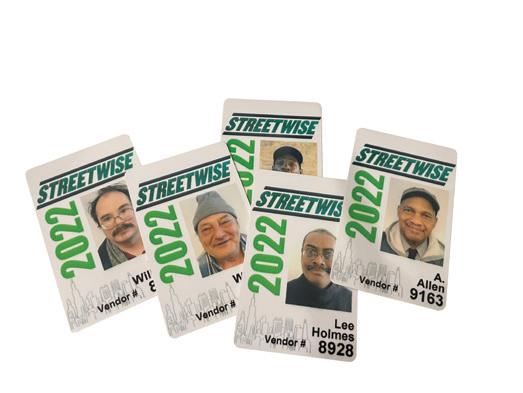
When
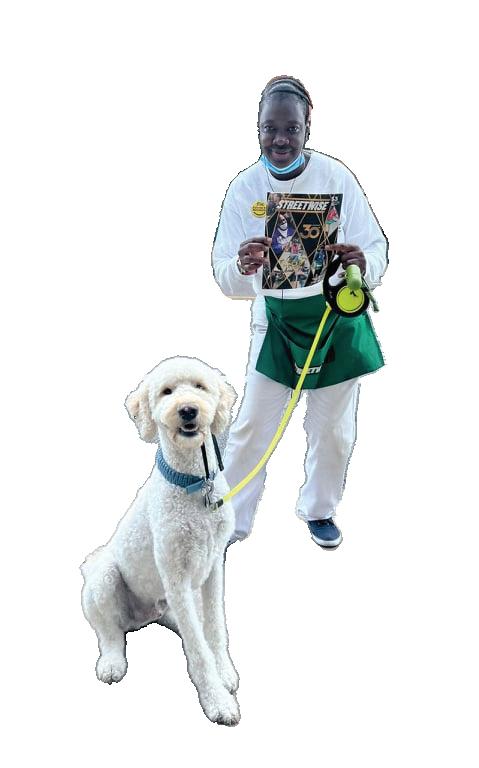






Copyright ©2017 PuzzleJunction.com Sudoku Solution To solve the Sudoku puzzle, each row, column and box must contain the Copyright ©2017 PuzzleJunction.com Sudoku Solution ©2017 PuzzleJunction.com Solution 33 Grinder 34 Stockholm native 36 Colorful salamander 39 Hairstylist 40 Roman deity 42 Scoop 43 Sleazy 45 Take turns 46 Forest runner 48 Bulrushes 49 Junk E-mail 50 Paella pot 51 Curb, with “in” 52 Summon 54 Mannerly sort 55 Small bills 58 Attempt 60 Warbler Yoko 56 Entreaty 57 Footnote abbr. 59 “Two Women” star 61 Dismounted 62 Impulse 63 Cockamamie 64 Place for a comb 65 Bakery selections 66 Knuckleheads Down 1 Pesky insect 2 Squander 3 Procurable 4 Black and tan ingredient 5 Blending into traffic 6 Confederate general Braxton 7 Bench wear 8 In poor health 9 Vocal group 10 Aide 11 Polecat’s defense 12 Pseudonym of H. H. Munro 13 Give off, as light 22 Aardvark’s morsel 24 Brewski 26 Gives the boot 28 Rocket section 29 Young hooter 30 Hold up 31 Yoked beasts 32 One-sided Last week's Puzzle Answers Streetwise 12/25/17 Crossword PuzzleJunction.com ©2017 PuzzleJunction.com 33 Evil 34 Tropical fever 36 Echelon 40 Worry 43 Riatas 44 Social group 45 Small sample 50 Big name in software 53 Extensor muscle 54 Take apart 56 Chip
chips 57
58
59 Stage
60
Across 1 Small intake 4 Medicinal amt. 7 Fa follower 10 Cheer
13 Frazier foe 14 Drink
mug 15 It
17
19
20 Discouraging
21 Digress 22 Gospel
25
27 Error
31 Blood-related 32
Ziegfeld 33 Like
bonds 35 Scientist’s tool 37 Playing
38 Colonnade tree 39 Those
clout 40 Winter bug 41 Get firm 42 Staggered 44
46 Church tables 47 Minister
48 Mine entrance 49 More or ___ 50
51 Takes out 52
60 Charity event 64 Cause 65 Certain colonist 66 It needs refinement 67
68 John ___ Passos 69 Downed 70 Just
Down 1 Fluid container 2 Feverish 3 Cobbler 4
root 7 Puts into piles 8 In the past 9 Volcano output 10
medium 11
offering 12
16
18
22
23
26
©PuzzleJunction.com
in
Phenom
Have a bawl
signal
Call to Bopeep
for a banderillero
in a
could be standing
Resolve
Uprisings
words
writer
Cries of triumph
message?
Showman
some
marbles
with
Recess, e.g.
(Abbr.)
Cat, in Mexico
Crouch
Needle part
manage, with “out”
Tropical
Painter’s
Realtor’s
Starfleet Academy grad.
Industrial city of Japan
Concerning 21 Loafer, e.g.
Football pass
Island strings 24 Fates
Priests’ vestments Crossword
Buy the Magazine, Take the Magazine
All vendors go through an orientation focusing on their rights and responsibilities as a StreetWise Magazine Vendor. Authorized vendors have badges with their name, picture and current year. you
buy the magazine, take the magazine, and read the magazine, you are supporting our microentrepreneurs earning an income with dignity.
How StreetWise Works -or-
New vendor orientation is every Tuesday and Thursday at 10:00 a.m. at 2009 S. State St. Find your nearest vendor at www.streetwise.org













 Compiled by Sarah Linde & Suzanne Hanney
Compiled by Sarah Linde & Suzanne Hanney


















 by Suzanne Hanney
by Suzanne Hanney












 by Suzanne Hanney
by Suzanne Hanney




















